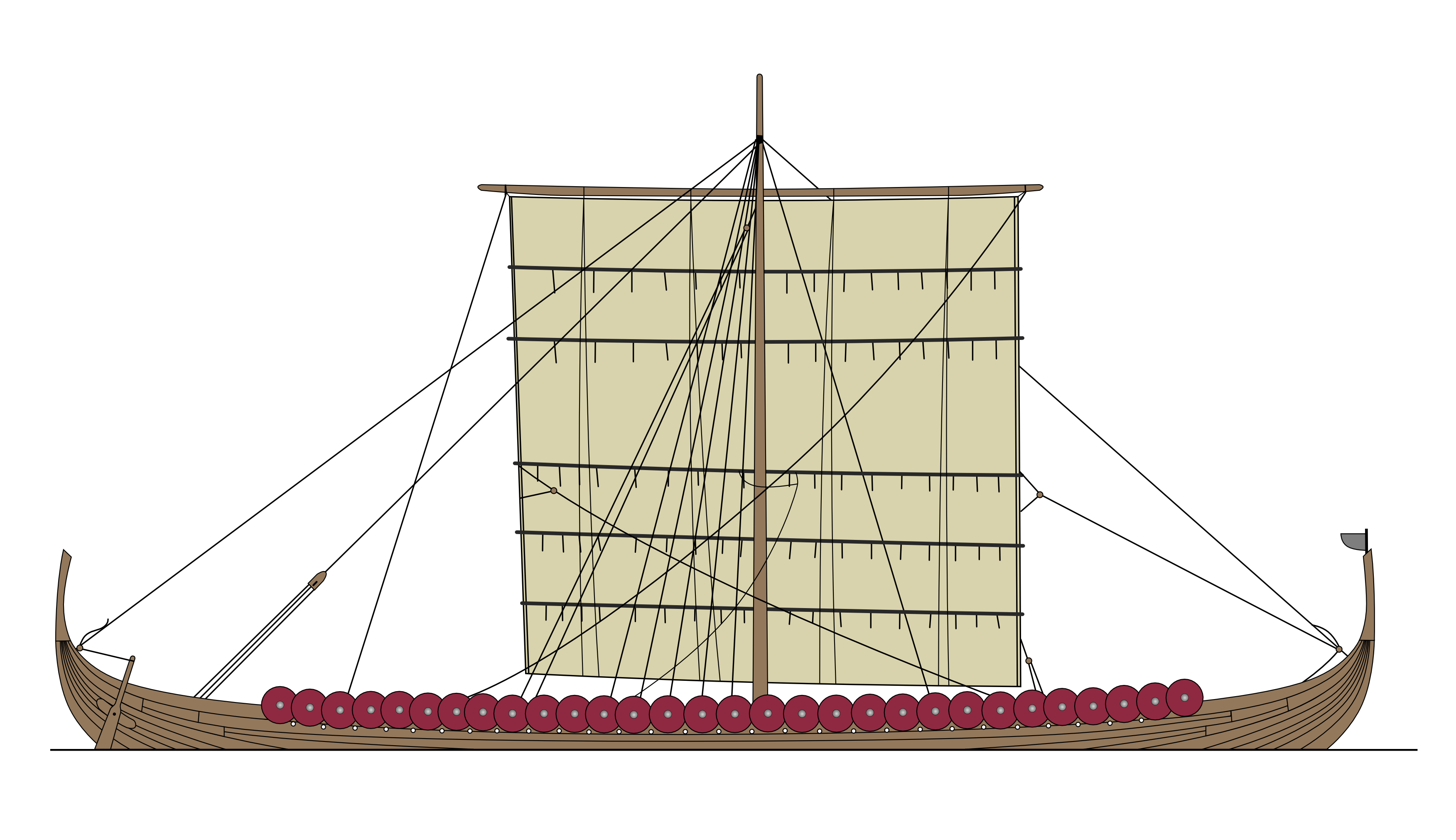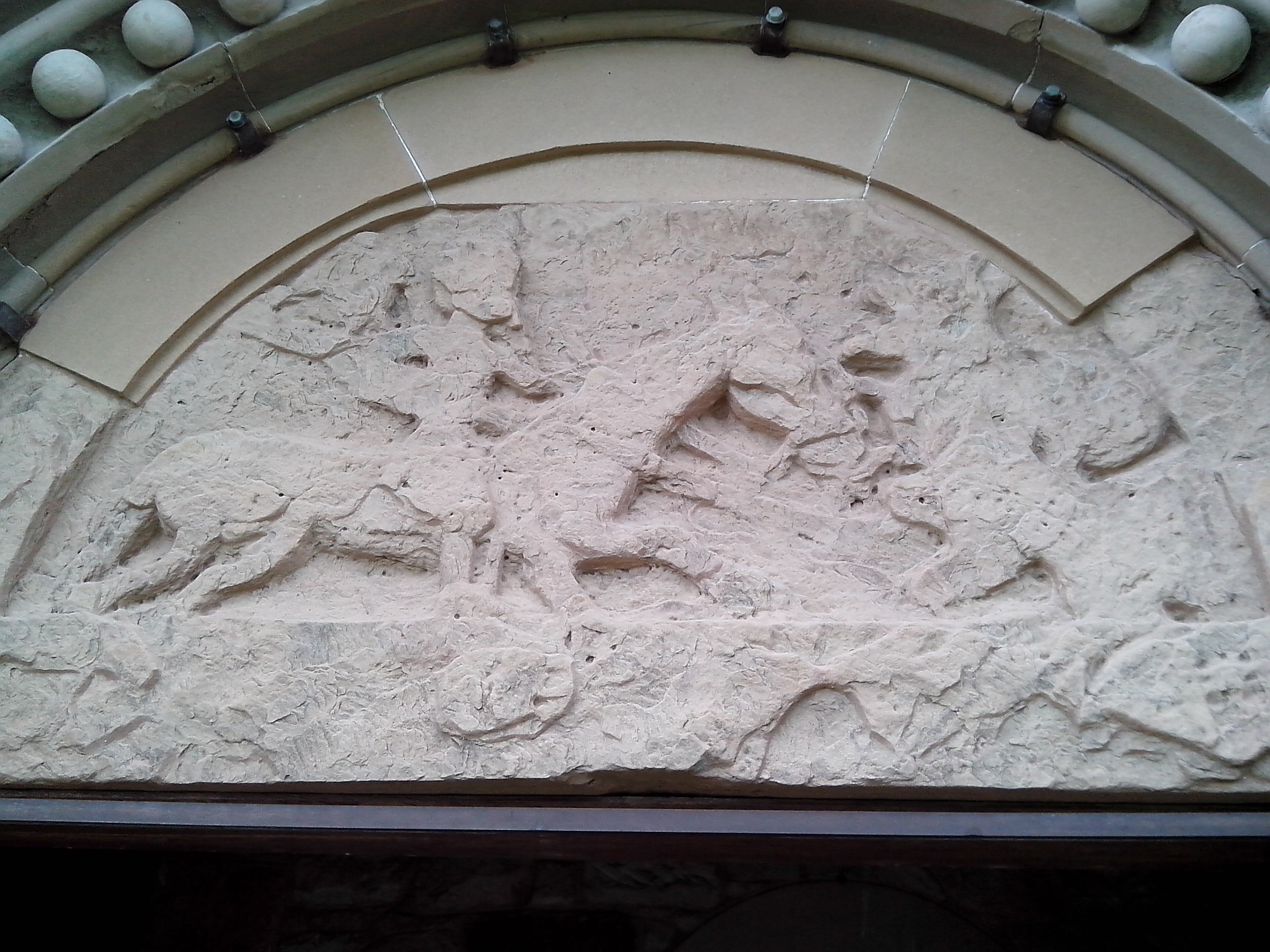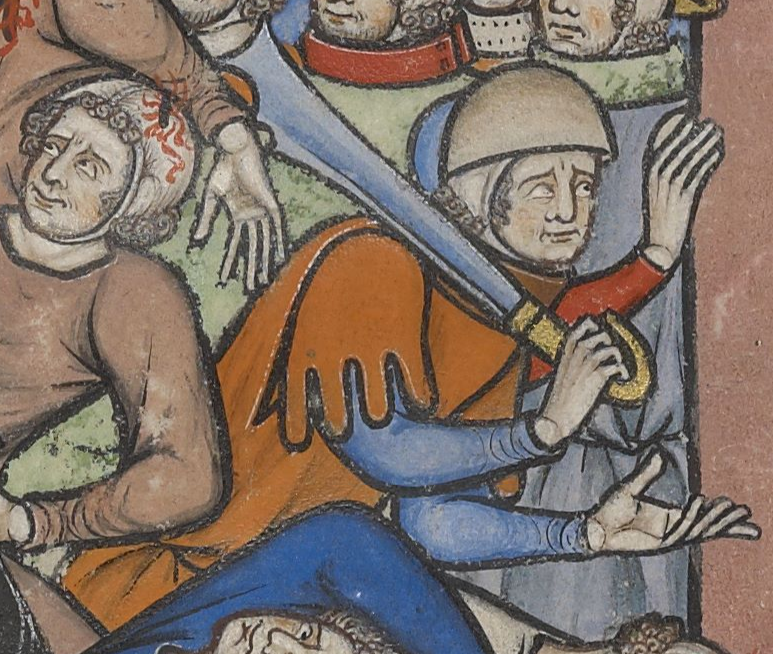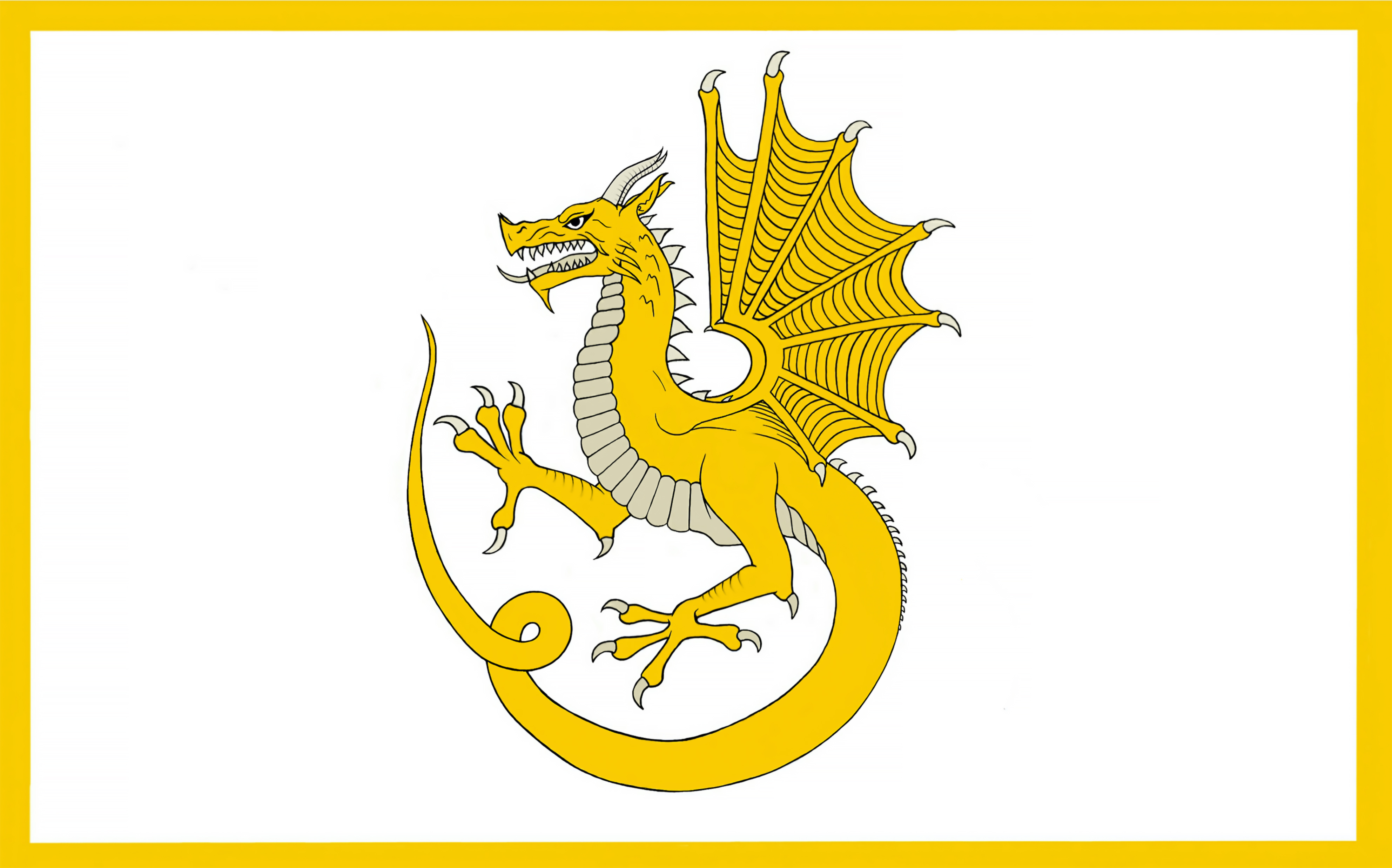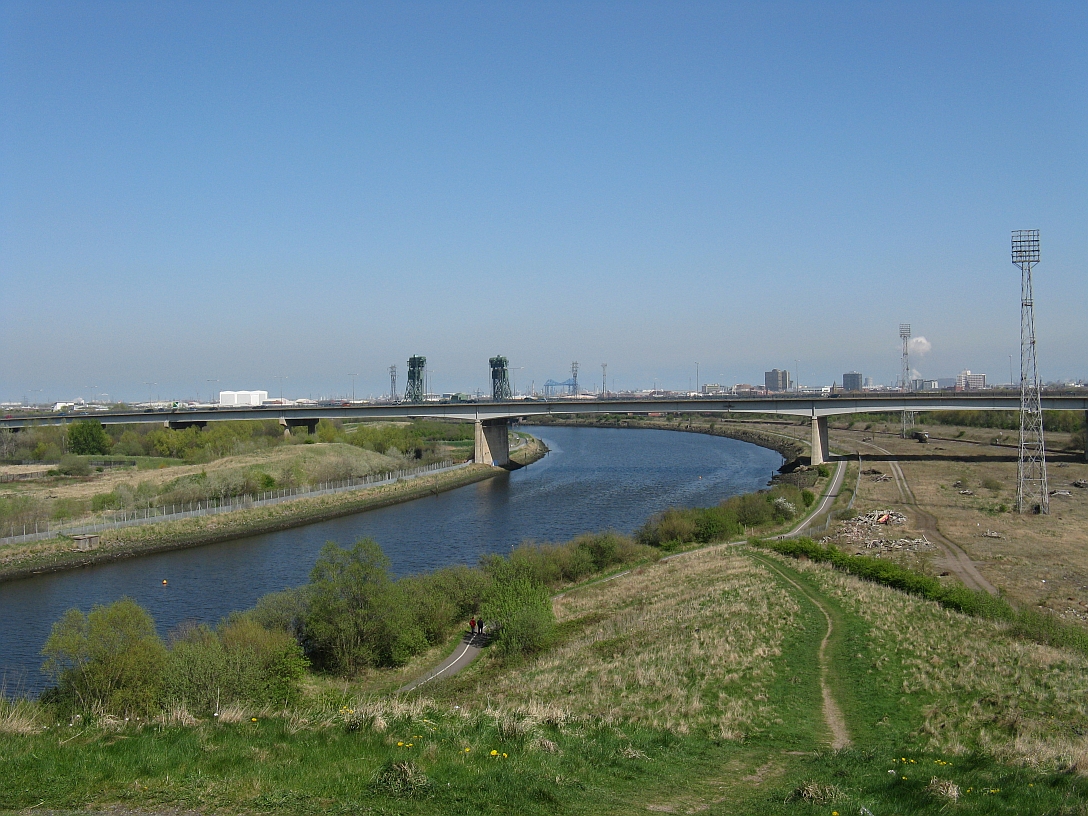|
Sockburn Worm
In the folklore of Northumbria, the Sockburn Worm was a ferocious wyvern that laid waste to the village of Sockburn in Durham. It was said that the beast was finally slain by John Conyers. The tale is said by many to be the inspiration for Lewis Carroll's poem ''Jabberwocky'' which he wrote while in Croft-on-Tees and Whitburn. Each newly consecrated Bishop-Prince of Durham, while entering the Bishopric for the first time at the local Ford or over the bridge over the River Tees at Croft-on-Tees, was presented with the falchion that John Conyers used on the worm. The Lord of Sockburn traditionally reads a speech while presenting the blade: ''"My Lord Bishop. I hereby present you with the falchion wherewith the champion Conyers slew the worm, dragon or fiery flying serpent which destroyed man, woman and child; in memory of which the king then reigning gave him the manor of Sockburn, to hold by this tenure, that upon the first entrance of every bishop into the county the falchion sh ... [...More Info...] [...Related Items...] OR: [Wikipedia] [Google] [Baidu] |
Northumbria
la, Regnum Northanhymbrorum , conventional_long_name = Kingdom of Northumbria , common_name = Northumbria , status = State , status_text = Unified Anglian kingdom (before 876)North: Anglian kingdom (after 876)South: Danish kingdom (876–914)South: Norwegian kingdom (after 914) , life_span = 654–954 , flag_type = Oswald's Stripes, the provincial flag of Northumbria and red was previously purple , image_coat = , image_map = Map_of_the_Kingdom_of_Northumbria_around_700_AD.svg , image_map_size = 250 , image_map_caption = Northumbria around 700 AD , image_map2 = , image_map2_size = , image_map2_caption = , government_type = Monarchy , year_start = 653 , year_end = 954 , event_end = South is annexed by Kingdom of England , event1 = South is annexed by the Danelaw , date_eve ... [...More Info...] [...Related Items...] OR: [Wikipedia] [Google] [Baidu] |
Longship
Longships were a type of specialised Scandinavian warships that have a long history in Scandinavia, with their existence being archaeologically proven and documented from at least the fourth century BC. Originally invented and used by the Norsemen (commonly known as the Vikings) for commerce, exploration, and warfare during the Viking Age, many of the longship's characteristics were adopted by other cultures, like Anglo-Saxons, and continued to influence shipbuilding for centuries. The longship's design evolved over many centuries, and continuing up until the sixth century with clinker-built ships like Nydam. The longship appeared in its complete form between the ninth and 13th centuries. The character and appearance of these ships have been reflected in Scandinavian boatbuilding traditions to the present day. The particular skills and methods employed in making longships are still used worldwide, often with modern adaptations. They were all made out of wood, with cloth sails ... [...More Info...] [...Related Items...] OR: [Wikipedia] [Google] [Baidu] |
County Durham Folklore
A county is a geographic region of a country used for administrative or other purposesChambers Dictionary, L. Brookes (ed.), 2005, Chambers Harrap Publishers Ltd, Edinburgh in certain modern nations. The term is derived from the Old French denoting a jurisdiction under the sovereignty of a count (earl) or a viscount.The Oxford Dictionary of English Etymology, C. W. Onions (Ed.), 1966, Oxford University Press Literal equivalents in other languages, derived from the equivalent of "count", are now seldom used officially, including , , , , , , , and ''zhupa'' in Slavic languages; terms equivalent to commune/community are now often instead used. When the Normans conquered England, they brought the term with them. The Saxons had already established the districts that became the historic counties of England, calling them shires;Vision of Britai– Type details for ancient county. Retrieved 31 March 2012 many county names derive from the name of the county town (county seat) with t ... [...More Info...] [...Related Items...] OR: [Wikipedia] [Google] [Baidu] |
Northumbrian Folklore
Northumbrian may refer to: Languages * present-day Northumbrian dialect, a variant of Northern English closely related to Scots * historic Northumbrian Old English, a variety of Old English spoken in the Kingdom of Northumbria People * an inhabitant of the present-day region of Northumbria or North East England * an inhabitant of the historic county of Northumberland specifically * an inhabitant of the historic Kingdom of Northumbria Transport * Northumbrian (locomotive) ''Northumbrian'' was an early steam locomotive built by Robert Stephenson in 1830 and used at the opening of the Liverpool and Manchester Railway (L&M). It was the eighth of Stephenson's nine 0-2-2 locomotives in the style of ''Rocket'', but ..., a locomotive built in 1830 and first to encompass smokebox and firebox within the boiler barrel {{disambiguation Northumbria ... [...More Info...] [...Related Items...] OR: [Wikipedia] [Google] [Baidu] |
Worm Of Linton
The Linton Worm is a mythical beast referred to in a Scottish Borders legend dating back to the 12th century. "Wyrm" is the Old English for serpent. A 12th-century writer believed it to be "In length three Scots yards and bigger than an ordinary man’s leg – in form and callour to our common muir edders." The myth is similar to that of the more famous Lambton Worm. Legend The monster lived in a hollow on the northeast side of Linton Hill, a spot still known as the "Worm’s Den", at Linton in Roxburghshire on the Scottish borders. Emerging from its lair at dusk and dawn to ravage the countryside, eating crops, livestock and people, it proved invulnerable to the weapons ranged against it. The surrounding area became ruined by the beast's predations. The news reached the ears of one John de Somerville, the Laird of Lariston and a man of reckless courage, who was in the south at that time. He travelled to the nearby village of Jedburgh and heard the lurid tales of the locals. O ... [...More Info...] [...Related Items...] OR: [Wikipedia] [Google] [Baidu] |
Lambton Worm
The Lambton Worm is a legend from County Durham in north-east England in the United Kingdom. The story takes place around the River Wear, and is one of the area's most famous pieces of folklore, having been adapted from written and oral tradition into pantomime and song formats. The legend The story revolves around John Lambton, an heir of the Lambton Estate, County Durham (now in Tyne and Wear), and his battle with a giant worm (dragon) that had been terrorising the local villages. As with most myths, details of the story change with each telling. Origin of the worm The story states that the young John Lambton was a rebellious character who missed church one Sunday to go fishing in the River Wear. In many versions of the story, while walking to the river, or setting up his equipment, John receives warnings from an old man (or a witch – depending on who tells the story) that no good can come from missing church. John Lambton does not catch anything until the church s ... [...More Info...] [...Related Items...] OR: [Wikipedia] [Google] [Baidu] |
The Laidly Worm Of Spindleston Heugh
''The Laidly Worm of Spindleston Heugh'', also known as ''The Laidly Worm of Bamborough'', is a Northumbrian ballad about a princess who is changed into a dragon (the "laidly worm" of the title). Synopsis In the Kingdom of Northumbria, a kind king in Bamburgh Castle takes a beautiful but cruel witch as his queen after his wife's death. The King's son, Childe Wynd, has gone across the sea and the witch, jealous of the beauty of the king’s daughter, Princess Margaret, and quick to take advantage of Wynd’s absence, turns her into a dragon. The enchantment used is usually: ::::''I weird ye to be a Laidly Worm,'' ::::''And borrowed shall ye never be,'' ::::''Until Childe Wynd, the King's own son'' ::::''Come to the Heugh and thrice kiss thee;'' ::::''Until the world comes to an end,'' ::::''Borrowed shall ye never be.'' Later in the story, the prince returns and, instead of fighting the dragon, kisses it, restoring the princess to her natural form. He then turns the witch-queen ... [...More Info...] [...Related Items...] OR: [Wikipedia] [Google] [Baidu] |
North-east England
North East England is one of nine official regions of England at the first level of ITL for statistical purposes. The region has three current administrative levels below the region level in the region; combined authority, unitary authority or metropolitan district and civil parishes. They are also multiple divisions without administrative functions; ceremonial county, emergency services ( fire-and-rescue and police), built-up areas and historic county. The most populous places in the region are Newcastle upon Tyne (city), Middlesbrough, Sunderland (city), Gateshead, Darlington and Hartlepool. Durham also has city status. History The region's historic importance is displayed by Northumberland's ancient castles, the two World Heritage Sites of Durham Cathedral and Durham Castle, and Hadrian's Wall, one of the frontiers of the Roman Empire. In fact, Roman archaeology can be found widely across the region and a special exhibition based around the Roman Fort of Segedunum at W ... [...More Info...] [...Related Items...] OR: [Wikipedia] [Google] [Baidu] |
Bow (ship)
The bow () is the forward part of the hull of a ship or boat, the point that is usually most forward when the vessel is underway. The aft end of the boat is the stern. Prow may be used as a synonym for bow or it may mean the forward-most part of the bow above the waterline. Function A ship's bow should be designed to enable the hull to pass efficiently through the water. Bow shapes vary according to the speed of the boat, the seas or waterways being navigated, and the vessel's function. Where sea conditions are likely to promote pitching, it is useful if the bow provides reserve buoyancy; a flared bow (a raked stem with flared topsides) is ideal to reduce the amount of water shipped over the bow. Ideally, the bow should reduce the resistance and should be tall enough to prevent water from regularly washing over the top of it. Large commercial barges on inland waterways rarely meet big waves and may have remarkably little freeboard at the bow, whereas fast military ve ... [...More Info...] [...Related Items...] OR: [Wikipedia] [Google] [Baidu] |
Falchion
A falchion (; Old French: ''fauchon''; Latin: ''falx'', "sickle") is a one-handed, single-edged sword of European origin. Falchions are found in different forms from around the 13th century up to and including the 16th century. In some versions, the falchion looks rather like the seax and later the sabre, and in other versions more like a machete with a crossguard. Types The blade designs of falchions varied widely across the continent and over time. They almost always included a single edge with a slight curve on the blade towards the point on the end and most were also affixed with a quilloned crossguard for the hilt in the manner of the contemporary arming swords. Unlike the double-edged swords of Europe, few actual swords of this type have survived to the present day; fewer than a dozen specimens are currently known. A number of weapons superficially similar to the falchion existed in Western Europe, including the Messer, hanger and the backsword. Two basic types of ... [...More Info...] [...Related Items...] OR: [Wikipedia] [Google] [Baidu] |
Wyvern
A wyvern ( , sometimes spelled wivern) is a legendary winged dragon that has two legs. The wyvern in its various forms is important in heraldry, frequently appearing as a mascot of schools and athletic teams (chiefly in the United States, United Kingdom, and Canada). It is a popular creature in European literature, mythology, and folklore. Today, it is often used in fantasy literature and video games. The wyvern in heraldry and folklore is rarely fire-breathing, unlike four-legged dragons. Etymology According to the ''Oxford English Dictionary'', the word is a development of Middle English ''wyver'' (attested fourteenth century), from Anglo-French ''wivre'' (cf. French ''guivre'' and ''vouivre''), which originate from Latin ''vīpera'', meaning "viper", "adder", or "asp". The concluding "''–n''" had been added by the beginning of the 17th century, when John Guillim in 1610 describes the "''wiverne''" as a creature that "partake of a Fowle in the Wings and Legs ... and dot ... [...More Info...] [...Related Items...] OR: [Wikipedia] [Google] [Baidu] |
River Tees
The River Tees (), in Northern England, rises on the eastern slope of Cross Fell in the North Pennines and flows eastwards for to reach the North Sea between Hartlepool and Redcar near Middlesbrough. The modern day history of the river has been tied with the industries on Teesside in its lower reaches, where it has provided the means of import and export of goods to and from the North East England. The need for water further downstream also meant that reservoirs were built in the extreme upper reaches, such as Cow Green Reservoir, Cow Green. Etymology The name ''Tees'' is possibly of Common Brittonic, Brittonic origin. The element ''*tēs'', meaning "warmth" with connotations of "boiling, excitement" (Welsh language, Welsh ''tes''), may underlie the name. ''*Teihx-s'', a root possibly derived from Brittonic ''*ti'' (Welsh ''tail'', "dung, manure"), has also been used to explain the name ''Tees'' (compare River Tyne#Origins of name, River Tyne). Geography The river drains and ... [...More Info...] [...Related Items...] OR: [Wikipedia] [Google] [Baidu] |
